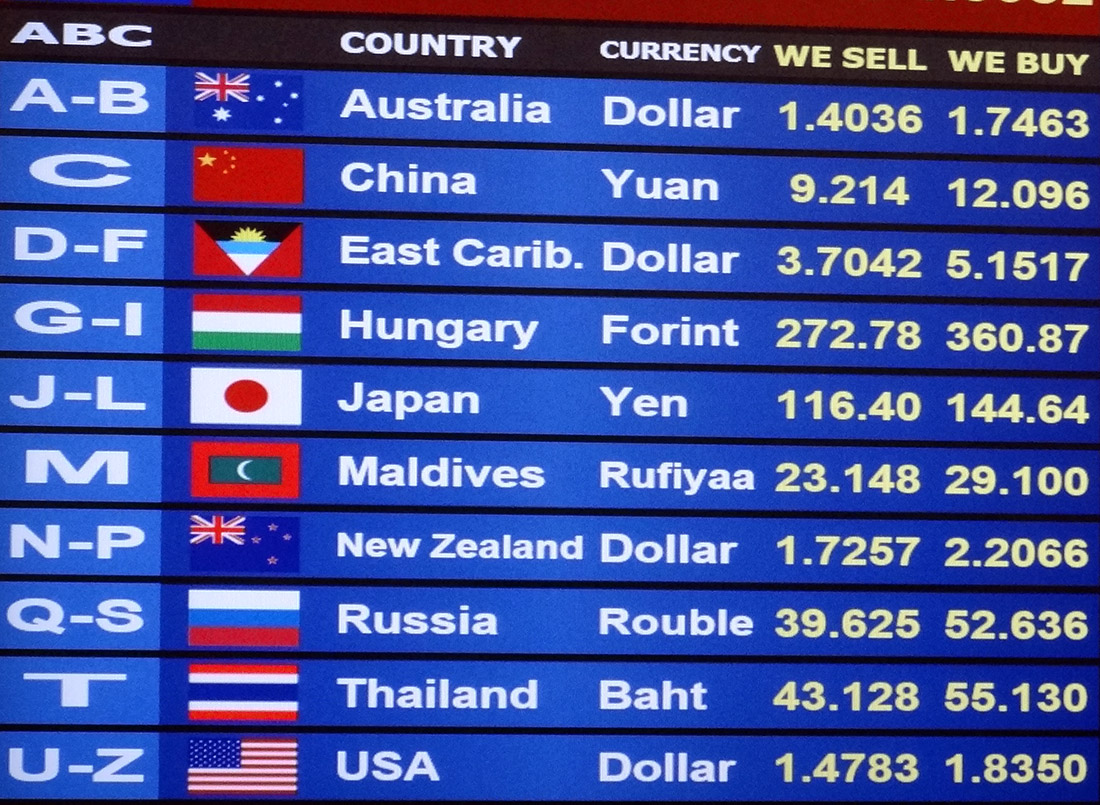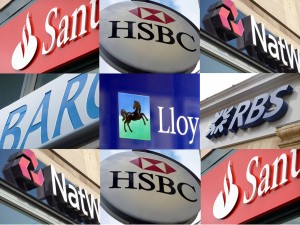 Paul Volcker was Chair of the US Federal Reserve from 1979 to 1987. He was also Chair of the Economic Recovery Advisory Board under President Barack Obama from February 2009 to January 2011. In the webcast and articles below, he reflects on the current state of the world financial system – from regulation, to the euro crisis, to world imbalances, to the system of floating exchange rates.
Paul Volcker was Chair of the US Federal Reserve from 1979 to 1987. He was also Chair of the Economic Recovery Advisory Board under President Barack Obama from February 2009 to January 2011. In the webcast and articles below, he reflects on the current state of the world financial system – from regulation, to the euro crisis, to world imbalances, to the system of floating exchange rates.
He argues that global financial systems are vulnerable to breakdowns. What is needed is reform to the system, and for that there needs to be consensus by politicians, regulators and central banks.
But, in the absence of international consensus on some key points, reform will be greatly weakened, if not aborted. The freedom of money, financial markets and people to move – and thus to escape regulation and taxation – might be an acceptable, even constructive, brake on excessive official intervention, but not if a deregulatory race to the bottom prevents adoption of needed ethical and prudential standards.
Perhaps most important is a coherent, consistent approach to dealing with the imminent failure of “systemically important” institutions. Taxpayers and governments alike are tired of bailing out creditors for fear of the destructive contagious effects of failure – even as bailouts encourage excessive risk-taking.
According to Volcker, countries must be prepared to surrender some sovereignty. Policies must be co-ordinated internationally and there must be stronger regulation by international bodies, such as the IMF and stronger concerted action by global organisations, such as the G20.
 Left to their own devices, in an era of floating exchange rates, countries may pursue policies that exacerbate global imbalances.
Left to their own devices, in an era of floating exchange rates, countries may pursue policies that exacerbate global imbalances.
Not so long ago, we were comforted by theorising that floating exchange rates would mediate international adjustments in a timely and orderly way. But, in the real world, many countries, particularly but not limited to small, open economies, simply find it impractical or undesirable to permit their currency to float.
We are left with the certainty, however awkward, that active participation in an open world economy requires some surrender of economic sovereignty. Or, to put the point more positively, it requires a willingness to co-ordinate policies more effectively.
Webcast
 Volcker Urges Global Monetary System Overhaul BloombergBusinessweek (31/5/12)
Volcker Urges Global Monetary System Overhaul BloombergBusinessweek (31/5/12)
Articles
Is global financial reform possible? Guardian, Paul Volcker (6/6/12)
Volcker Urges Global Financial System Overhaul After Crisis BloombergBusinessweek, Robyn Meredith and Shamim Adam (31/5/12)
Questions
- What reforms, according to Volcker, need to be implemented in order for the euro to function effectively without crises?
- What can the USA do to ease the euro crisis?
- What are Volcker’s views on the regulation of the US banking system?
- How are incentive structures in banks related to speculative activities?
- Should banks be allowed to fail?
- What financial imbalances exist between countries?
- What international monetary reforms are required?
- What light can game theory shed on the difficulty of achieving global policy co-ordination?
- Is an international system of floating exchange rates appropriate given the size of international financial flows?
 With the financial crisis came accusations towards the banking sector that they had taken on too many bad risks. Banks were lending money on more and more risky ventures and this in part led to the credit crunch. Since then, bank lending has fallen and banks have been less and less willing to take on risky investments.
With the financial crisis came accusations towards the banking sector that they had taken on too many bad risks. Banks were lending money on more and more risky ventures and this in part led to the credit crunch. Since then, bank lending has fallen and banks have been less and less willing to take on risky investments.
Small businesses tend to fall (rightly or wrongly) into the category of high risk and it is this sector in particular that is finding itself struggling to make much needed investments. All businesses require loans for investments and improvements and if the banking sector is unable or unwilling to lend then these improvements cannot take place.
Quantitative easing has been a key response across the world to the credit crisis to encourage banks to begin lending to each other and to customers. A new government backed scheme worth £20bn aims to increase bank lending to small and medium sized enterprises (SMEs). By guaranteeing £20bn of the participating banks’ own borrowing, lenders will be able to borrow more cheaply than normal. As the banks (so far including Barclays, Santander, RBS and Lloyds Banking Group) can borrow at a cheaper rate, they will therefore be able to pass this on to the businesses they lend to. Under this National Loan Guarantee Scheme (NLGS), businesses will be able to borrow at interests rates that are 1 percentage point lower than those outside the scheme. £5bn will initially be made available with subsequent installments each of £5bn to come later.
With the Budget looming, the Chancellor is keen to show that the government is delivering on its promise to give smaller businesses access to finance at lower interest rates. If this initiative does indeed stimulate higher lending, it may be a much needed boost for the economy’s faltering economic growth. Criticisms have been leveled at the scheme, saying that although it is a step in the right direction, it can by no means be assumed that it will be sufficient to solve all the problems. In particular, the NLGS is unlikely to provide much help for those small businesses that can’t get finance in the first place, irrespective of the cost of the borrowing. Furthermore some banks, notably HSBC, have chosen not to participate in the scheme, due to it not being commercially viable. The overall effect of this scheme will take some time be seen, but if it is effective, it could give the economy and the small business sector a much needed boost.
Banks to join credit-easing scheme Associated Press (20/3/12)
Credit easing: small businesses to get £20bn of guaranteed cheap loans Telegraph, Harry Wilson (20/3/12)
Bank lending scheme targets small businesses BBC News (20/3/12)
Move over Merlin, credit easing has arrived Independent, Ben Chu (20/3/12)
Credit easing injects £20bn into small firms Sky News (20/3/12)
UK launches small firm loan scheme, critics want more Reuters, Fiona Shaikh (20/3/12)
Osborne’s big plan: £20bn for small businesses Independent, Andrew Grice and Ben Chu (20/3/12)
George Osborne launches new scheme to boost lending to businesses Guardian, Larry Elliott (20/3/12)
Questions
- What is credit easing? Has the government’s previous credit easing had the intended effect?
- Why are small and medium sized enterprises normally seen as risky investments?
- Briefly explain the thinking behind this National Loan Guarantee Scheme.
- What are the criticisms currently levelled at this scheme? To what extent are they justified?
- Why has HSBC said that the scheme is not commercially viable for the bank?
- Explain why this scheme could provide a stimulus to the UK economy.
Each month the Monetary Policy Committee of the Bank of England meets to set Bank Rate – the Bank’s repo rate, which has a direct impact on short-term interest rates and an indirect effect on other interest rates, such as mortgage rates and bond yields. Ever since March 2009, Bank Rate has been 0.5%. So each month the MPC has met and decided to do nothing! The latest meeting on 4 and 5 May was no exception.
And it is not just the Bank of England. The Fed in the USA has kept interest rates at between 0 and 0.25% ever since December 2008. The ECB had maintained its main interest rate at 1% for two years from May 2009. Then last month (April) it raised the rate to 1.25%, only to keep it unchanged at that level at its meeting on 5 May.
So is all this ‘doing nothing’ on interest rates (or very little in the case of the ECB) a sign that the economies of the UK, the USA and the eurozone are all ticking along nicely? Are they in the ‘goldilocks’ state of being neither too hot (i.e. too much demand and excessive inflation) or too cold (i.e. too little demand and low growth, or even recession)? Or does the apparent inaction on interest rates mask deep concerns and divisions within the decision-making bodies?
The three central banks’ prime concern may be inflation, but they are also concerned about the rate of economic growth. If inflation is forecast to be above target and growth to be unsustainably high, then central banks will clearly want to raise interest rates. If inflation is forecast to be below target and economic growth is forecast to be low or negative, then central banks will clearly want to reduce interest rates.
But what if inflation is above target and will probably remain so and, at the same time, growth is low and perhaps falling? What should the central bank do then? Should it raise interest rates or lower them? This is the dilemma facing central banks today. With soaring commodity prices (albeit with a temporary fall in early May) and the economic recovery stalling or proceeding painfully slowly, perhaps keeping interest rates where they are is the best option – an ‘active’ decision, but not an easy one!
Articles
Central Banks Leave Rates Unchanged News on News (8/5/11)
European Central Bank set for a bumpy ride City A.M., Guy Johnson (9/5/11)
Euro Tumbles Most Against Dollar Since January on Rate Signal; Yen Climbs Bloomberg, Allison Bennett and Catarina Saraiva (7/5/11)
Rates outlook Financial Times, Elaine Moore (6/5/11)
Interest rates on hold amid fears economy is stalling Independent, Sean Farrell (6/5/11)
The decision to hold back on increasing interest rates may turn out to be wrong Independent, Hamish McRae (6/5/11)
 Bank of England: Inflation threat from fuel bills BBC News. Hugh Pym (11/5/11)
Bank of England: Inflation threat from fuel bills BBC News. Hugh Pym (11/5/11)
Andrew Sentance loses last battle over interest rates Guardian, Heather Stewart (5/5/11)
Interest rates: what the experts say Guardian (5/5/11)
King’s Defense of Record-Low Rates in U.K. Is Bolstered by Economic Data Bloomberg, Svenja O’Donnell (5/5/11)
BoE holds rates: reaction The Telegraph, Joost Beaumont, Abn Amro (5/5/11)
UK interest rates kept on hold at 0.5% BBC News (5/5/11)
Bank of England Signals Rate Increase This Year as Inflation Accelerates Bloomberg, Svenja O’Donnel (11/5/11)
ECB: Clearing the way for an Italian hawk? BBC News blogs: Stephanomics, Stephanie Flanders (5/5/11)
Ben and the Fed’s excellent adventure BBC News blogs: Stephanomics, Stephanie Flanders (27/4/11)
Inflation up. Growth down. Uncertainty everywhere BBC News blogs: Stephanomics, Stephanie Flanders (11/5/11)
Inflation report: analysts expecting a rate rise are wide of the mark Guardian, Larry Elliott (11/5/11)
May’s Inflation Report – three key graphs The Telegraph, Andrew Lilico (11/5/11)
The Errors Of The Inflation Hawks, Part I Business Insider, John Carney (9/5/11)
Errors of Inflation Hawks, Part II CNBC, John Carney (9/5/11)
Data and information
Inflation Report Bank of England
 Inflation Report Press Conference Webcast Bank of England (11/5/11)
Inflation Report Press Conference Webcast Bank of England (11/5/11)
Monetary Policy ECB
ECB Interest Rates ECB
Monetary Policy Federal Reserve
US interest rates Federal Reserve
Questions
- Why is it exceptionally difficult at the current time for central banks to “get it right” in setting interest rates?
- What are the arguments for (a) raising interest rates; (b) keeping interest rates the same and also embarking on another round of quantitative easing?
- Should central banks respond to rapidly rising commodity prices by raising interest rates?
- Why is inflation in the UK currently around 2 percentage points above the target?
- What is likely to happen to inflation in the coming months and why?
- Explain the following comment by John Carney in the final article above: “To put it differently, the textbook money multiplier doesn’t exist anymore. This means that Fed attempts to juice the economy by raising the quantity of reserves—the basic effect of quantitative easing—are bound to fail.”.
- What has been the recent relationship in the UK between (a) growth in the monetary base and growth in broad money; (b) growth in the monetary base and inflation and economic growth?
The global economy has been in a recession since December 2007, but have we now passed the worst of it? Whilst companies are still going bankrupt, unemployment is still rising, the housing market is still looking pretty gloomy and government debt surely can’t go up anymore, there are indications that we’ve reached the bottom of the recession. There are murmurs that the economy may start to recover towards of the end of the year.
But, of course, economics wouldn’t be economics if there wasn’t considerable disagreement. Many still believe that the worst is yet to come. According to the OECD, the recession is ‘near the bottom’. Yet, output in the UK is still set to decline by 4.3% in 2009, and by 2010 the budget deficit is predicted to have grown to 14%. Unemployment is at its highest since November 1996, but US consumer confidence is said to be rising and the pound is climbing. Read these articles and make up your mind about the state of the UK and global economy!!
Business and Consumer Surveys (After following link, click on chart) European Commission, Economic and Financial Affairs (29/6/09)
Pound climbs against euro as King sees signs recession easing Bloomberg, Lukanyo Mnyanda, Gavin Finch (20/6/09)
Bank says banking crisis easing BBC News (25/6/09)
First signs of optimism returning to some parts of financial services CBI PRess Release (29/6/09)
Darling and King agreed on tentative recovery Guardian, Ashley Seager (17/6/09)
Sharp contration for UK economy BBC News (30/6/09)
Housing market knocked by price falls Moneywise (22/6/09)
OECD says recession ‘near bottom’ BBC News, Steve Schifferes (24/6/09)
US Federal Reserve says recession is ‘easing’ Telegraph, James Quinn (24/6/09)
Public borrowing at record levels BBC News (18/6/09)
Leading index suggests recession easing UPI.com (18/6/09)
US consumer confidence up in June BBC News (26/6/09)
Blow for housing market as prices fall The Independent, David Prosser (22/6/09)
Most UK businesses freeze pay as recession bites, CBI says Telegraph, Peter Taylor (23/6/09)
Questions
- What are the typical characteristics of a recession? Do the current statistics of the four main macroeconomic objectives fit in with what economic theory tells us?
- Which policies would governments normally implement to get a economy into the expansionary/recovery phase of the business cycle and how do they work?
- Why is consumer confidence so key to economic recovery?
- What type of banking regulation is needed to prevent a similar crisis happening again?
- Movements in the housing market are often seen as indicators of the state of the economy. Why is this?
A key cause of the financial crisis is arguably Maths. Many of the innovations in the finance industry were driven by Maths and a desire to generate higher returns from the money available. The BBC programme, More or Less, looks at the Maths of the credit crunch and considers the extent to which the misuse of mathematical principles may have contributed to the crisis. The links below look at the issues raised by the programme and also give access to the archived audio from the programme.
The Maths of the credit crunch BBC News Online (9/1/09)
More or less – programe summary (9th January programme) BBC News Online (9/1/09)
More or less – programe summary (2nd January programme) BBC News Online (2/1/09)
More less – programme (audio) BBC News Online (9/1/09)
Questions
- Analyse the extent to which quantitative analysis may have been responsible for the credit crunch.
- Consider whether the system of paying performance bonuses to bank traders created a distortion of incentives.
- Explain what is meant by a derivative. Discuss the role that derivatives played in the financial crisis.
 Paul Volcker was Chair of the US Federal Reserve from 1979 to 1987. He was also Chair of the Economic Recovery Advisory Board under President Barack Obama from February 2009 to January 2011. In the webcast and articles below, he reflects on the current state of the world financial system – from regulation, to the euro crisis, to world imbalances, to the system of floating exchange rates.
Paul Volcker was Chair of the US Federal Reserve from 1979 to 1987. He was also Chair of the Economic Recovery Advisory Board under President Barack Obama from February 2009 to January 2011. In the webcast and articles below, he reflects on the current state of the world financial system – from regulation, to the euro crisis, to world imbalances, to the system of floating exchange rates. Left to their own devices, in an era of floating exchange rates, countries may pursue policies that exacerbate global imbalances.
Left to their own devices, in an era of floating exchange rates, countries may pursue policies that exacerbate global imbalances. Volcker Urges Global Monetary System Overhaul BloombergBusinessweek (31/5/12)
Volcker Urges Global Monetary System Overhaul BloombergBusinessweek (31/5/12)